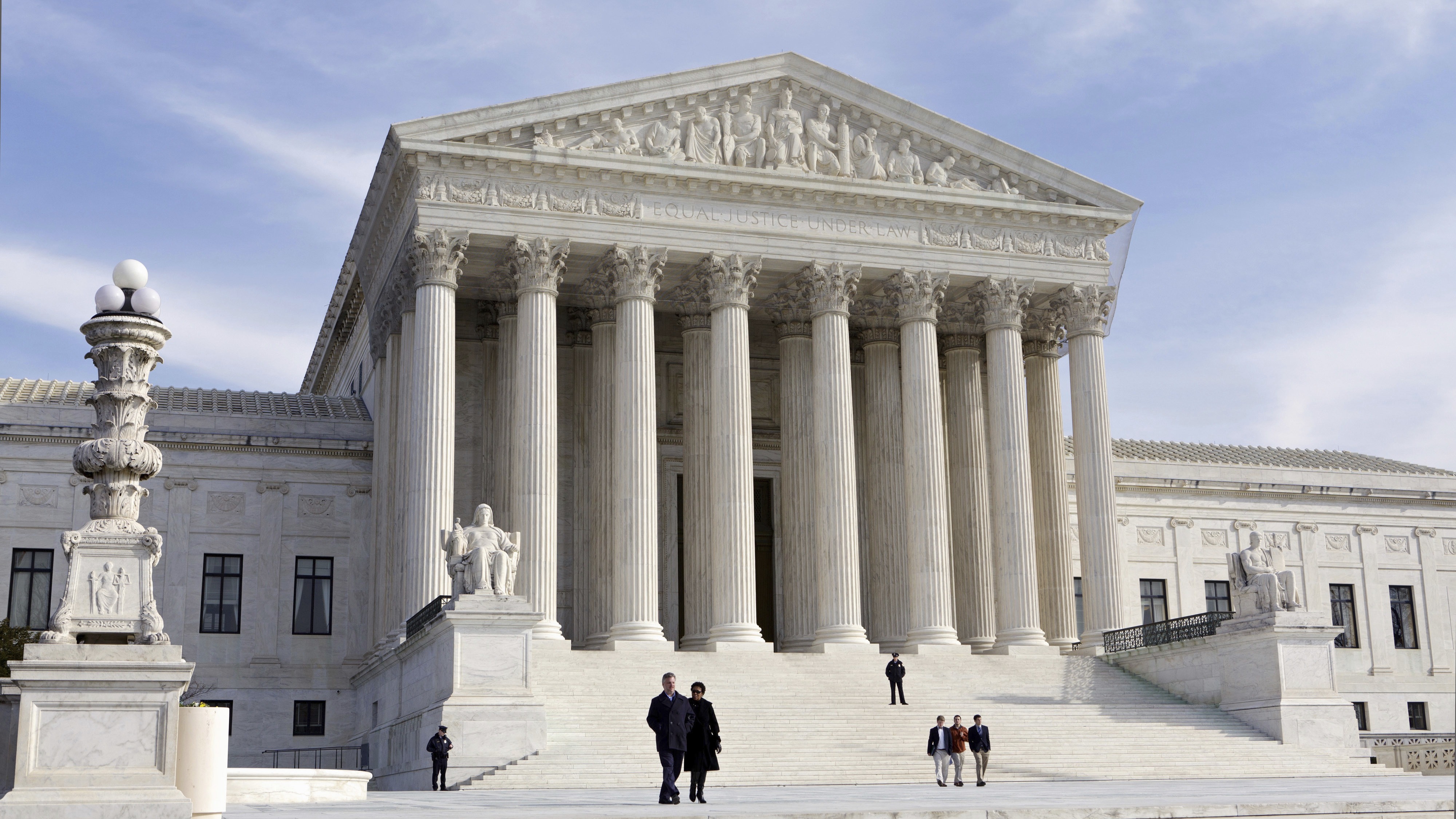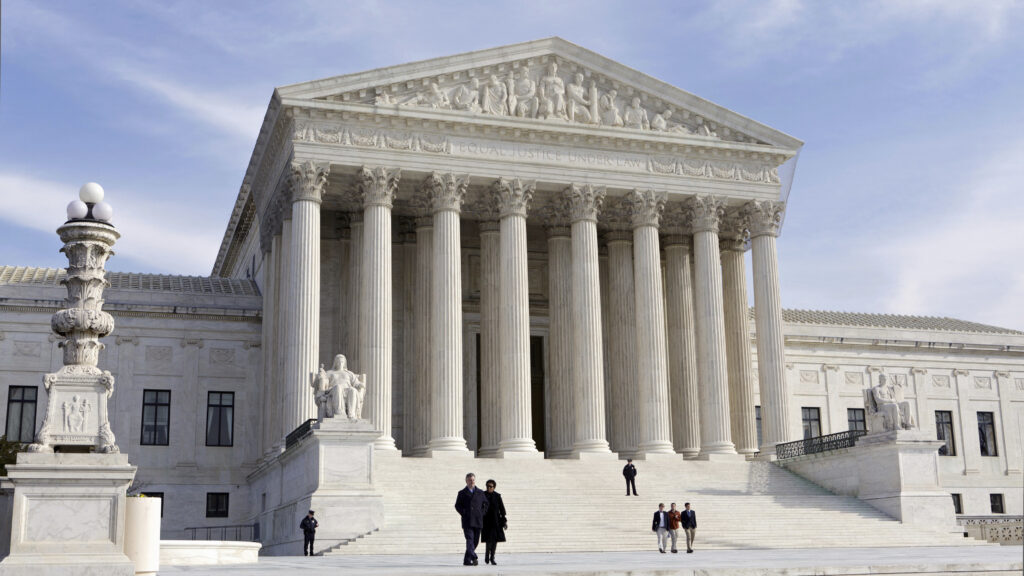
In Challenge To Roe, Supreme Court To Review Mississippi Abortion Law
BY NINA TOTENBERG
With Roe v. Wade hanging by a thread, the U.S. Supreme Court has agreed to consider a major rollback of abortion rights.
It is the second time in weeks that the court’s new conservative majority has signaled a willingness to reconsider long-established legal doctrine, this time on abortion, and just weeks ago, on guns.
The court said Monday it would review next term whether all state laws that ban pre-viability abortions are unconstitutional. The court’s 1973 ruling in Roe v. Wade declared that a woman has a constitutional right to terminate a pregnancy in the first six months of her pregnancy when the fetus is incapable of surviving outside the womb.
The test case is from Mississippi, which bans most abortions after 15 weeks, significantly before fetal viability. A panel of the 5th U.S. Circuit Court of Appeals, one of the most conservative in the country, blocked enforcement of the law, finding it in conflict with Roe v. Wade and subsequent abortion decisions.

The U.S. Supreme Court, where conservatives have a 6-3 majority, will consider an abortion case from Mississippi that could alter long-standing precedent. CREDIT: J. Scott Applewhite/AP
The Mississippi appeal has been sitting on the court’s docket awaiting disposition since last fall, about a month before Amy Coney Barrett was confirmed to replace Justice Ruth Bader Ginsburg a week before the presidential election.
There is no indication of why the court stayed its hand for so long, but the case was listed on the weekly conference for discussion by the justices 17 times before Monday’s announcement.
Mississippi’s law is one of many that conservative states have passed in the last year or more, seeking to eliminate or severely restrict abortion.
“The consequences of a Roe reversal would be devastating,” said Nancy Northup, president and CEO of the Center for Reproductive Rights. It would mean that “about 24 states” would have laws banning abortion completely, says the center’s litigation director, Julie Rikelman. That includes 11 states — among them Mississippi — that “currently have trigger bans on the books which would instantaneously ban abortion if Roe is overturned.”
Bans on pre-viability, abortion bans have been struck down, until now, in a dozen states since 2019, including Alabama, Arkansas, Georgia, Kentucky, Louisiana, Montana, Missouri, Ohio, Oklahoma, South Carolina, Utah and Tennessee.
In 2016, the Supreme Court let stand similar rulings that struck down a six-week ban in North Dakota and a 12-week ban in Arkansas. That same year, the court struck down a Texas law that made it difficult and expensive for clinics that perform abortions to function.
But since then, the composition of the court has changed dramatically, with the death of Justice Ruth Bader Ginsburg, a major advocate of reproductive rights; the retirement of Justice Anthony Kennedy, a centrist conservative who supported abortion rights; and the addition of three Trump appointees to the court.
Bottom line: The court now has a 6-3 conservative super majority, with all six having taken positions hostile to abortion rights at one time or another, and the newest justice, Barrett, the most outspoken critic of abortion before joining the high court.
The 6-3 majority means that conservatives can lose one of their own on this issue and still prevail. That wasn’t the case as long as Chief Justice John Roberts held the deciding vote. Though he has never been a supporter of abortion rights, his approach has always been to whittle away at Roe, slowly eroding the rights tiny piece by tiny piece. But with Monday’s decision to take on the whole question of pre-viability abortion bans, that approach may now be on the way out, and a more direct approach on the way in — namely overturning Roe.
The question that the court has agreed to hear is “very broad, it couldn’t be broader,” says James Bopp Jr., the longtime general counsel of National Right to Life.
This moment, he says, could be “like Brown v. Board of Education,” the 1954 decision that reversed course after more than a half century and outlawed racial segregation in public schools. But, Bopp adds, the high court acted gradually in a series of cases that over 16 years built the case for reversing the 1896 Plessy v. Ferguson decision and its doctrine of “separate but equal.”
He thinks that more likely than an outright reversal of Roe next term, the court will take a major step in that direction, with the final blow to come in a later case.
He gets no disagreement on this assessment from abortion rights advocates.
“It does seem to be an inflection point for the future of reproductive rights and certainly the future of Roe,” says NYU law professor Melissa Murray. Roe and the court’s subsequent abortion decisions “have all confirmed that states cannot prohibit abortion before [fetal] viability.” But the courts decision to revisit what has been a line in the judicial sand until now, she says, “puts Roe squarely in the crosshairs,” she says.
A decision to reverse Roe or start down that path, she adds, would have uncertain but enormous consequences not just for the court and its image but also for the political world and the debate about the future of the court. It would also send a signal about other matters.
Whatever legislation that Congress passes, whatever executive orders or administrative regulations that the Biden administration might put into effect, “can always be undone by an inhospitable court,” Murray observes, adding, “And I think we’re seeing that here — a more emboldened conservative majority willing to take things up, willing to take fights that I think in the past they might have shied away from. But they’re not shying away now.”















